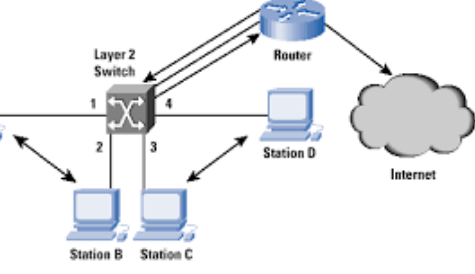Understanding L3 Networks: An In-Depth Guide to Layer 3 Networking
Introduction
In the world of computer networking, Layer 3 (L3) plays a crucial role in facilitating communication between different devices and networks. L3 networks, also known as IP networks, are responsible for routing data packets across multiple subnets and networks. Understanding how function is essential for network administrators and IT professionals. In this comprehensive guide, we will delve into the intricacies , exploring their key components, protocols, and benefits.

I. What are L3 Networks?
L3 networks, also referred or IP networks, operate at the network layer of the OSI (Open Systems Interconnection) model. Their primary function is to route data packets across different networks using logical addressing, typically based on IP (Internet Protocol). These networks enable communication between devices and networks by determining the optimal path for data transmission.
II. Key Components of L3 Networks
A. Routers: Routers are the cornerstone . They serve as the gateway between different networks and facilitate the exchange of data packets by examining destination IP addresses and making routing decisions.
B. IP Addresses: IP addresses are unique identifiers assigned to devices on a network. They enable routers to identify the source and destination of data packets, allowing for efficient routing.
C. Subnets: Subnets are logical subdivisions of IP networks. They help organize and manage IP addresses by grouping them into smaller, more manageable segments.
III. L3 Network Protocols
A. Routing Protocols: Routing protocols determine the best path for data packets to traverse through a network. Common routing protocols include OSPF (Open Shortest Path First), BGP (Border Gateway Protocol), and RIP (Routing Information Protocol).
B. Internet Protocol (IP): The IP protocol is fundamental . It provides the addressing scheme required for identifying devices and routing packets across networks. IPv4 and IPv6 are the two main versions of IP in use today.
C. Internet Control Message Protocol (ICMP): ICMP is a protocol that enables network devices to send error messages and control messages. It plays a crucial role in troubleshooting network issues and detecting network failures.
IV. Benefits of L3 Networks
A. Scalability: L3 networks allow for the creation of large, scalable networks by efficiently routing data across multiple subnets and networks.
B. Flexibility: L3 networks offer flexibility in network design, allowing for the segmentation of networks into smaller subnets and the implementation of diverse routing strategies.
C. Enhanced Security: By implementing access control lists (ACLs) and firewall rules at the network layer, L3 networks provide enhanced security by filtering and controlling traffic based on IP addresses and protocols.
V. Conclusion
In conclusion, L3 networks,form a critical part of modern computer networking. They enable the routing of data packets across different networks, facilitating communication between devices and networks. Understanding the key components and protocols essential for network administrators and IT professionals. By leveraging routers, IP addressing, subnets, and various protocols, provide scalability, flexibility, and enhanced security. As technology continues to advance, will remain a crucial element in building robust and efficient network infrastructures.
